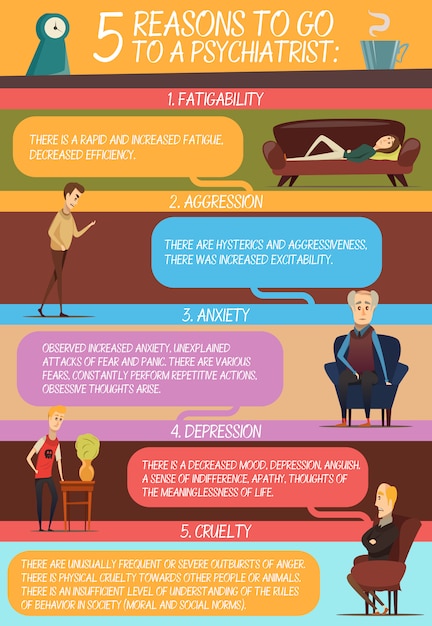Just How Do Mood Stabilizers Job?
State of mind stabilizers assist to calm locations of the mind that are impacted by bipolar affective disorder. These medications are most reliable when they are taken regularly.
It might take a while to locate the right medicine that functions finest for you and your medical professional will monitor your condition throughout therapy. This will certainly entail regular blood tests and possibly a modification in your prescription.
Natural chemical regulation
Neurotransmitters are a group of chemicals that manage each other in healthy and balanced individuals. When levels become unbalanced, this can cause state of mind problems like clinical depression, anxiety and mania. Mood stabilizers help to avoid these episodes by assisting control the equilibrium of these chemicals in the mind. They additionally might be made use of alongside antidepressants to enhance their effectiveness.
Medicines that work as mood stabilizers include lithium, anticonvulsants and antipsychotics. Lithium is maybe one of the most popular of these drugs and jobs by influencing the circulation of salt via nerve and muscular tissue cells. It is frequently used to deal with bipolar disorder, but it can also be useful in treating other mood disorders. Anticonvulsants such as valproate, lamotrigine and carbamazepine are also effective mood stabilizing medications.
It can take some time to find the right type of medication and dosage for each person. It's important to work with your doctor and engage in an open dialogue about how the medication is benefiting you. This can be specifically handy if you're experiencing any kind of negative effects.
Ion network inflection
Ion channels are a major target of mood stabilizers and many other medicines. It is currently well established that they are dynamic entities that can be modulated by a variety of exterior stimulations. Furthermore, the inflection of these channels can have a range of temporal effects. At one extreme, changes in gating characteristics might be quick and instant, as in the nicotinic acetylcholine receptor/channel system. At the other end of the spectrum, covalent alteration by healthy protein phosphorylation might lead to changes in network feature that last much longer.
The field of ion channel inflection is getting in a period of maturity. Recent researches have demonstrated that transcranial concentrated ultrasound (United States) can promote neurons by activating mechanosensitive potassium and salt networks embedded within the cell membrane. This was shown by shared channels from the two-pore domain potassium family in Xenopus oocytes, and concentrated US considerably modulated the existing streaming through these networks at a holding voltage of -70 mV (best panel, relative effect). The outcomes follow previous observations showing that antidepressants influencing Kv networks regulate glia-neuron communications to contrary depressive-like habits.
Neuroprotection
State of mind stabilizers, like lithium, valproic acid (VPA), and carbamazepine, are important in the treatment of bipolar illness, which is defined by reoccurring episodes of mania and anxiety. These drugs have neuroprotective and anti-apoptotic residential or commercial properties that help to stop mobile damage, and they additionally improve cellular strength and plasticity in inefficient synapses and neural circuitry.
These safety actions of mood stabilizers might be mediated by their restraint of GSK-3, inositol signaling, and HDAC task. Furthermore, lasting lithium treatment protects versus glutamate excitotoxicity in cultured neurons-- a version for neurodegenerative conditions.
Studies of the molecular and mobile effects of mood stabilizers have actually revealed that these medications have a wide range of intracellular targets, consisting of several kinases and receptors, along with epigenetic alterations. Further study is required to identify if state of mind stabilizers have iop mental health treatment neurotrophic/neuroprotective activities that are cell type or circuitry certain, and exactly how these effects might complement the rapid-acting healing feedback of these agents. This will certainly help to establish new, quicker acting, more efficient treatments for psychological diseases.
Intracellular signaling
Cell signaling is the procedure by which cells connect with their atmosphere and various other cells. It involves a series of steps in which ligands engage with membrane-associated receptors and lead to activation of intracellular pathways that manage necessary downstream cellular features.
Mood stabilizers act on intracellular signaling via the activation of serine-threonine protein kinases, causing the phosphorylation of substrate healthy proteins. This activates signaling waterfalls, leading to modifications in gene expression and cellular feature.
Many mood stabilizers (consisting of lithium, valproate and lamotrigine) target intracellular signaling pathways by hindering specific phosphatases or triggering details kinases. These effects trigger a decline in the activity of these paths, which leads to a decrease in the synthesis of certain chemicals that can influence the brain and bring about signs of clinical depression or mania.
Some mood stabilizers additionally work by improving the task of the inhibitory neurotransmitter gamma-aminobutryic acid (GABA). This improves the GABAergic transmission in the brain and reduces neural task, consequently creating a relaxing effect.

Comments on “What Is Electroconvulsive Therapy Ect”